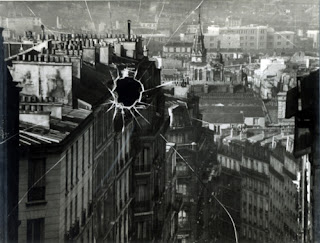2011年5月23日 星期一
2011年5月22日 星期日
2011年5月20日 星期五
Webb Pierce and his horned car



Nudie was equally famous for his garishly-decorated automobiles. Between 1950 and 1975 he customized 18 vehicles, mostly white Pontiac Bonneville convertibles, with silver-dollar-studded dashboards, pistol door handles and gearshifts, extended rear bumpers, and enormous longhorn steer horn hood ornaments. They were nicknamed "Nudie Mobiles", and the nine surviving cars have become valued collector's items.[1][5] A Bonneville convertible designed for country singer Webb Pierce is on display at the Country Music Hall of Fame and Museum in Nashville, Tennessee. A Pontiac Grandville convertible customized by Nudie can be seen at the end of the 1988 Buck Owens/Dwight Yoakam music video, "The Streets of Bakersfield." That same car - which Owens' manager claims was originally built for Elvis Presley[1] - now hangs over the bar inside Buck Owens' Crystal Palace in Bakersfield, California.
André Kertész, Broken Plate, Paris, 1929

Surrealist's bizarre, dream-like settings can be found, for example, André Kertész' Broken Plate, Paris, 1929 is similarly disconcerting with its unfolding city shattered by a crack and hole in the glass plate through which the scene is viewed.Fragmentation and strange juxtapositions are also prominent in the works, creating unusual dichotomies of strange/familiar, constructed/organic and erotic/grotesque
Brassaï “La Tour Saint-Jacques.”

Take the photograph by Brassaï, “La Tour Saint-Jacques.” It is in the room titled, “Le Réel, le Fortuit, le Merveilleux” demonstrating the Surrealist fascination with the city as their primary text. It is a picture of the tower at night with scaffolding surrounding it, as seen from the street level. Of course, this was not the first time in the history of art that someone has turned to the everyday images to explore a deeper idea. But the photograph does much more: it searches for the modern sublime of the city at night, devoid of human presence and almost devoid of adequate lighting. A room over, there are scrapbooks full of rags, streets, slums, and window-displays. The Surrealists found a new urban life all around them, aided in no small part to the camera that, yes, as Benjamin would say, strips what is being photographed of its authentic place in time and space. And this is the point.
2011年5月15日 星期日
2011年5月10日 星期二
訂閱:
文章 (Atom)






